Friday degustation: A wafer thin mint?
War memorial dust up

A planned extension of the Australian War Memorial in Canberra, which would include the demolition of a recently completed hall, is meeting stiff opposition from a group of luminaries across politics, media and the arts. Doug Dingwall reports in The Canberra Times, “Novelists Tom Keneally and Richard Flanagan, author and speechwriter Don Watson, Australia’s first female premier Carmen Lawrence, historians and a group of ex-senior public servants and diplomats are among 83 signatories to an open letter saying the money could be better spent. Among the opponents are 24 Australians awarded the highest national honours, former Australian War Memorial director Brendon Kelson, former deputy director Michael McKernan, and five of its ex-staff. [The letter] warned the expansion would offer memorial director Brendan Nelson a permanent legacy like that of none of his predecessors, and rejected the controversial planned demolition of the award-winning, 17-year-old Anzac Hall. “The memorial should be revered, but Australia has many stories and Dr Nelson’s excessive veneration of the Anzac story denies the richness of our history,” the letter said.”
The DNA of Colour
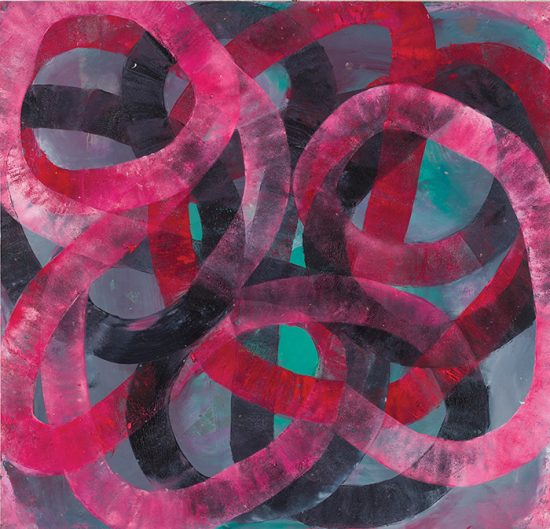
A major survey exhibition of the work of Ildiko Kovacs, ‘The DNA of Colour’, opens at Orange Regional Gallery on April 18. Curated by Sioux Garside, the show features over thirty-five major works, from the National Gallery of Australia, the Museum of Contemporary Art, the Art Gallery of New South Wales and Newcastle Art Gallery collections, along with works from private collections. [>] “In 2010 Ildiko Kovacs began to improvise a new style of painting made with paint rollers on plywood. This survey focusses on these sumptuous paintings in which the vibrancy of colours and forms do not simply evoke deep feelings or intuitions; the paintwork itself becomes a record or visible trace of the act of painting.”
Gold seekers
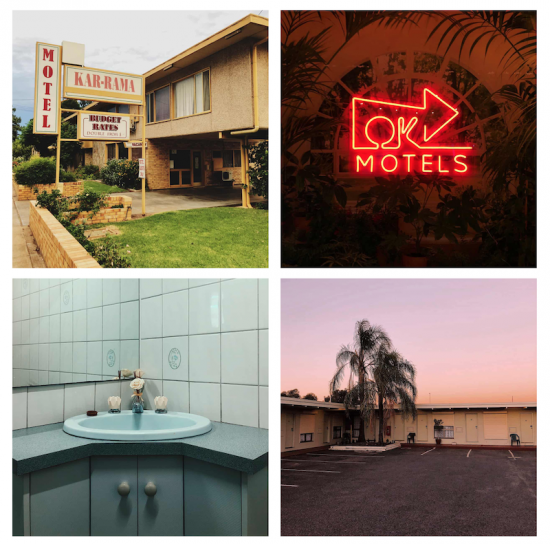
In ‘From vibrating beds to infinity mirrors: motels that never left the 70s’, writer Jenny Valentish present’s photographer Kate Berry’s tour of Australia’s greatest down-at-heel motels. [>] “When you pull up at a small-town motel, the race to run in and jump from one single bed to another is sweet relief from the past five hours of travel sickness. You’re in the grip of a very different kind of sickness – nostalgia. In the 19th century, it was considered to be a malady so serious it might get you committed. But it’s the lifeblood of Kate Berry, the Melbourne-based founder of OK Motels: an Instagram account – and, more recently, a gig series – celebrating and documenting the unique world of regional Australian motels. There’s a seedy romance to a rundown motel, which is why they’re been a staple of Australian movies over the decades, from 1981’s Roadgames, to 1997’s Kiss or Kill, 2010’s The Clinic and 2014’s The Rover. Berry puts on gigs in these far-flung roadhouses. She had the idea on trips with her kids, when she discovered that many motels – and indeed towns – remained unchanged since her childhood.”
From the Little Ice Age to neural nets…
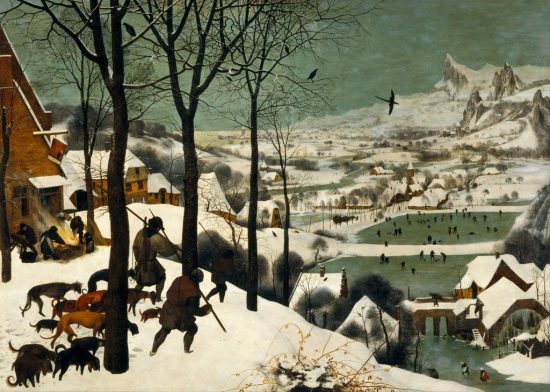
Kunsthistorisches Museum, Vienna
The analysis of old master pictures often reveals hidden-in-plain-sight clues that where we are today has deep historical roots. An essay by Jonathan McAloon for Artsy.net on Bruegel The Elder’s winter landscapes, and in particular ‘The Hunters in Snow’ of 1565, discusses the bucolic scene of hunters returning to town. “The figures in the painting skate on frozen rivers, play early versions of ice hockey with sticks and rocks, or attempt to catch birds. Above all, [the hunters on the left of the picture] seem to marvel at the stark beauty before them. But this picturesque sense of revelry has largely been conjured centuries later, by viewers who have evolved ways of protecting themselves from winter’s force.”
The clue in the image is that this scene was actually unusual. Writes McAloon, “For the artist and the ordinary folk populating his winter works, these images would have been bittersweet, if not foreboding: At the time these paintings were made, they were living through a period of intense climate change now known as the “Little Ice Age.”
Far from a winter wonderland, it was an ecological disaster: [>] “During this time period, rivers froze solid enough that locals were able to open rent-free marketplaces on them. Trees produced wood so hardy and unique that from it, Antonio Stradivari created the best musical instruments the world had ever seen. But food shortages were almost yearly, inciting riots and illness throughout Europe. Suicide rates rose. Many people thought the destruction of their crops or deaths of their children were punishments from God, or they blamed witchcraft for their misfortunes—claims that resulted in the deaths of thousands of women.”
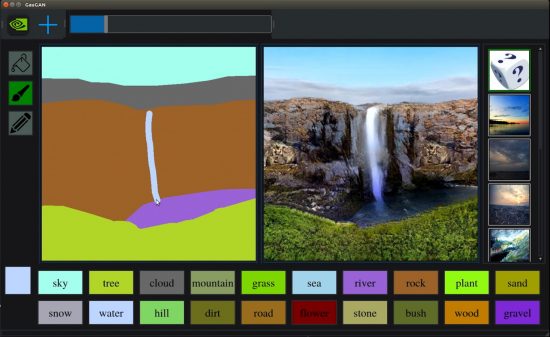
Meanwhile, in the future, one of the fascinating aspects of machine learning and artificial intelligence is the way in which the features of historical art genres such as portraiture and landscape can be approximated in a computer, and how in turn the viewer recognises these features and how they are in turn considered ‘natural’. Such a notion becomes starkly apparent in Nvidia’s neural network dubbed GauGAN. Says TechCrunch “…the software is just a demonstration of what’s possible with Nvidia’s neural network platforms. It’s designed to compile an image how a human would paint, with the goal being to take a sketch and turn it into a photorealistic photo in seconds. In an early demo, it seems to work as advertised.”
As the promotional video demonstrates, the process of creating a ‘photorealistic’ landscape has been made absurdly simple: “GauGAN has three tools: a paint bucket, pen and pencil. At the bottom of the screen is a series of objects. Select the cloud object and draw a line with the pencil, and the software will produce a wisp of photorealistic clouds. But these are not image stamps. GauGAN produces results unique to the input. Draw a circle and fill it with the paint bucket and the software will make puffy summer clouds. Users can use the input tools to draw the shape of a tree and it will produce a tree. Draw a straight line and it will produce a bare trunk. Draw a bulb at the top and the software will fill it in with leaves producing a full tree.”
From art dealer to quite good artist in just ten years…
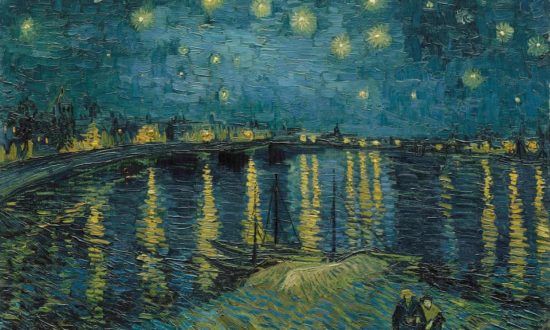
So it turns out that when Vincent Van Gogh lived briefly in London, what he saw in museums there inspired him to switch careers from art dealing to become a full time artist. According to the Guardian’s Charlotte Higgins, [>] “Van Gogh lived in London before his momentous decision in 1879 to become an artist. Working in Covent Garden at Goupil’s, as an art dealer specialising in reproductions, and lodging at Hackford Road in Lambeth, south of the river, he took long walks through the city streets, and often visited the National Gallery. A favourite painting in Trafalgar Square was Hobbema’s ‘The Avenue of Middleharnis’ , which showed a distinctive flat Dutch landscape, with pollarded trees lining a lane that diminishes into the distance. It is the progenitor of many similar views by Van Gogh. According to Carol Jacobi, the curator of the Tate Britain show, it was also his reading of John Bunyan’d ‘Pilgrim’s Progress’ that made the “small figure on a long autumnal avenue” become a “visualisation of life as a journey”.
Where found film goes to be reborn
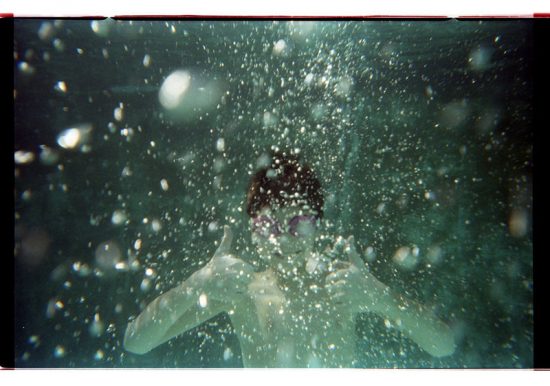
“You seen this shit? You seen this Home Alone 2: Lost in New York shit? It’s a grid system, motherf*cker! Where you at? 24th and 5th? Where you wanna go? 35th and 6th? 11 up and 1 over, you simple bitch!!” – John Mulaney
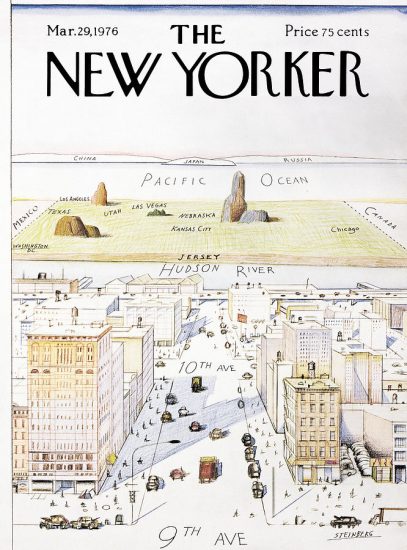
What would the world would look like if New York’s street and avenue numbering system were extended around the globe? [>] “ExtendNY, takes those lines of New York “latitude” and “longitude” and extends them over the entire earth. Any point, on land or sea, is assigned a hypothetical Manhattan city block. The Coney Island Cyclone roller coaster would be at 182nd Street and 34th Avenue, if the street grid extended out to Brooklyn. London’s Big Ben is on 63,709th Street and 10,896th Avenue. Right now, I’m typing this sentence in a Seattle coffee shop, but to a true New Yorker, I’m also on 586th Street, between 15,465th and 15,466th.”
Follow: Cutaway Views
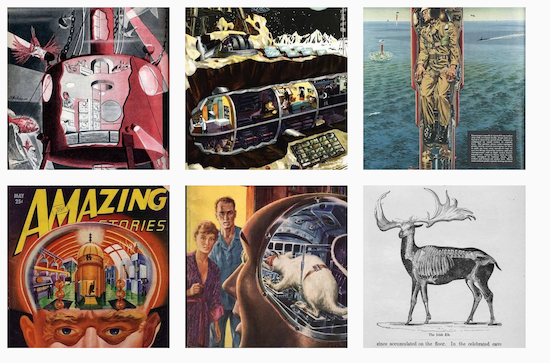
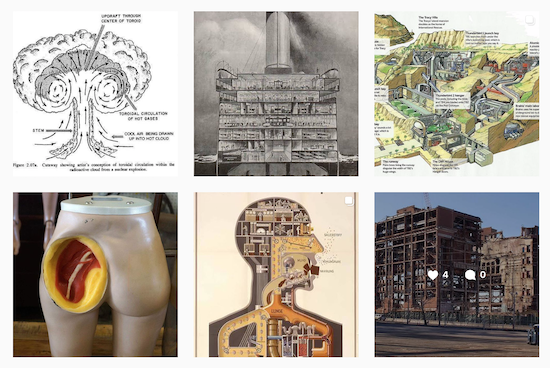
While it started out as a short term project, [>] Cutaway Views has morphed into a daily update of vintage and contemporary illustration and photography that reveals the hidden world of interiors, from the human body, volcanoes, to sciatic nerves, space ships and monstrous Santas, and even the super-rare real life cutaway view! [>] Follow on Instagram.
Assorted links
[>] Brushman of the bush Jack Absalom dies at 91
Believe it or not, there’s a search for artists to [>] make public art for Melbourne’s train stations
Rebecca Solnit considers the [>] reinterpretation of historic museum dioramas in the contemporary context
Is your MAGA cap all worn out? New spring season Trump merchandise now available [>] new t-shirts, mugs, and soap from the Trump Organization feature a few familiar sights.
Advanced AI likely [>] to replace most things human authors can do, except self pity, and literary festival panel appearances…
[>] RIP Scott Walker
Tetsuo: The Iron Man is [>] 30 years old! Here are five reasons to watch…
The story of a war photograph so powerful it could’ve changed public opinion [>] but which the media refused to publish.
The fenced off area at Pompey’s Theatre that’s the home of a feral cat colony – and the site where Julias Caesar was stabbed to death – [>] will soon open to the public
What’s worse than paying big bucks to get our kids to get into university? [>] Underpaid professors!
[>] Roy Orbison and Buddy Holly hologram tour announced…
Old favourites: A year of Rob Doyle’s most-loved books [>] Valis (1981) by Philip K Dick
